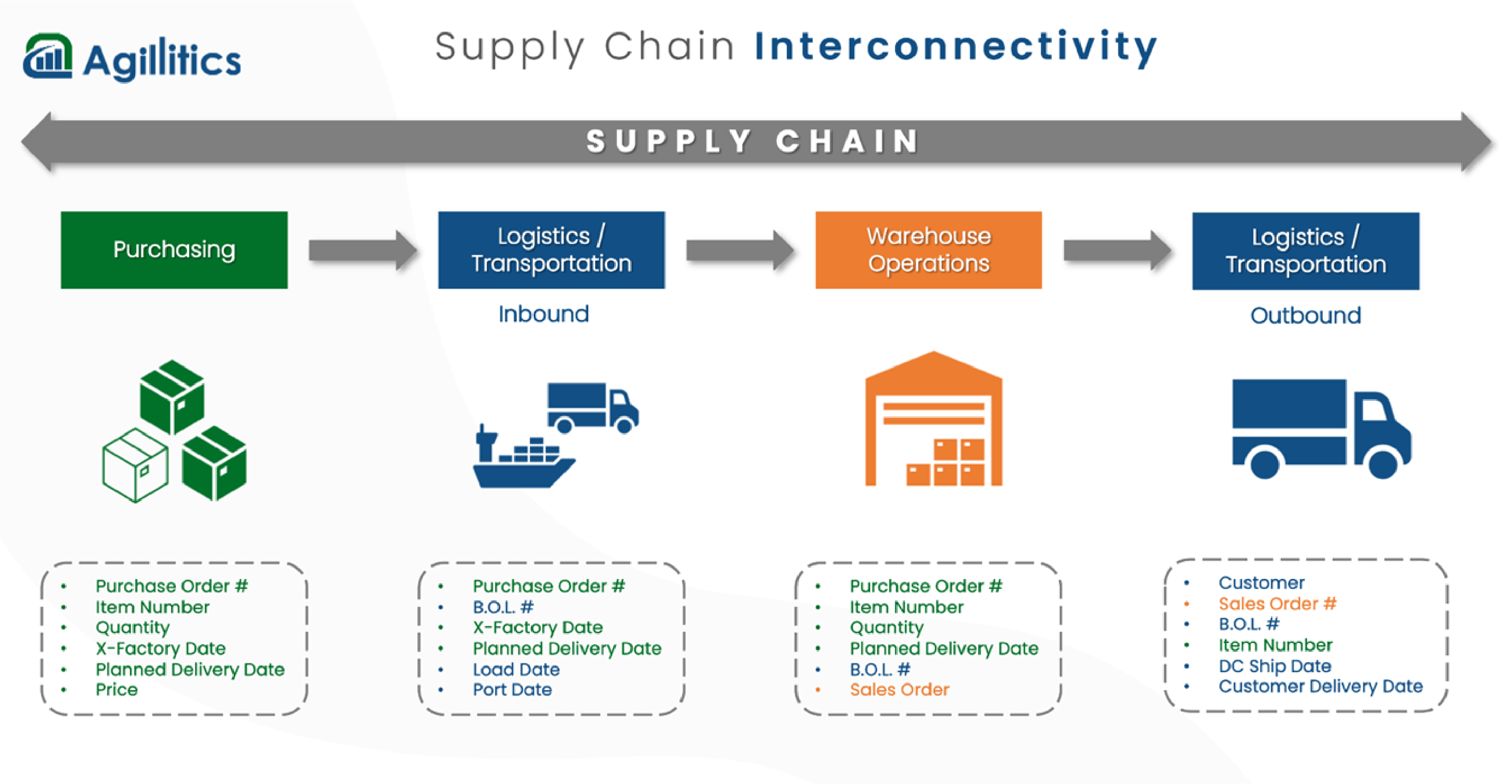Why the Silos?
by Daniel Breiner
For years, we have observed how many companies manage their supply chains through a fragmented structure, where multiple organizations pursue their own often disconnected goals, leading to various areas of friction within an organization. This tendency toward departmental compartmentalization is typically driven by the desire to concentrate efforts on critical areas. As a result, many organizations end up appointing separate Vice Presidents for Procurement, Logistics, Supply Chain, and Operations. Each of these personas has their own goals, strategies, and technological preferences, but with so many leaders involved, who is truly steering the ship? What processes or technologies are in place to ensure cross-functional collaboration?
As silos become entrenched within an organization, potential conflicts regarding priorities and budgets also emerge. Purchasing teams may leverage shipping costs during pricing negotiations to reduce the total cost of goods. However, if a separate Logistics department is responsible for managing freight expenses, there may be resistance to accepting additional costs if they do not align with that leader’s own goals, even if the result is an overall benefit for the company. What if a VP of DC Operations is reluctant to accept an inventory increase that could arise from procurement decisions aimed at maximizing volume or supporting promotional buys? Such conflicts can lead to organizational paralysis, hindering the ability to meet goals and objectives, and ultimately create an environment rife with institutional friction.
Some organizations attempt to alleviate this friction by appointing a Chief Operating Officer (COO) to oversee all departments. While this does create a final decision-making authority, the time and effort spent navigating through multiple layers of approval and interdepartmental politics could be better utilized in fostering organizational collaboration and driving improvements.
Does dividing supply chain teams lead to greater focus or increased division?
No department within an organization, particularly in a company’s supply chain, can function in isolation. The interdependencies among the various groups illustrate how essential collaboration is to operational success. For example, Distribution Center (DC) operations or manufacturing cannot function without procurement supplying the necessary goods or components. Similarly, procurement cannot effectively operate without the transportation and logistics teams to facilitate the movement of those items. Logistics, in turn, cannot fulfill customer orders if there are no products available to ship. This interdependency is further evidenced through examining organizational data.
The graphic below illustrates the critical data used by departments within an organization’s supply chain. The data elements are color-coded to the departments they are most associated with and aligned with the multiple departments where they are commonly utilized in business analytics.

Visualizing the areas of data overlap within an organization highlights the intricate web of interconnectivity that naturally exists within large and complex organizations. No supply chain department can function independently. If procurement fails to order goods, there will be no inbound logistics to manage. Without those inbound goods, warehouse operations (or manufacturing) cannot build or ship products, resulting in no use for outbound logistics. As such, removing any component of the supply chain disrupts the entire process, ultimately hindering customer satisfaction and sales. When these processes remain connected, the data also must be connected and should not be looked at independently.
So, I ask again, why the silos?
Alternatively, where should we go from here?
At Agillitics, we work with clients to unify data, helping organizations avoid the pitfalls of these silos. We provide comprehensive data solutions that allow leadership to gain a full view of operational achievements. By bridging the gaps between departments, we enable a more cohesive, efficient, and agile supply chain. Our goal is to empower organizations to not only meet but exceed their objectives by fostering collaboration and data-driven decision-making. Together, let’s break down the silos and build a more connected and resilient supply chain.


